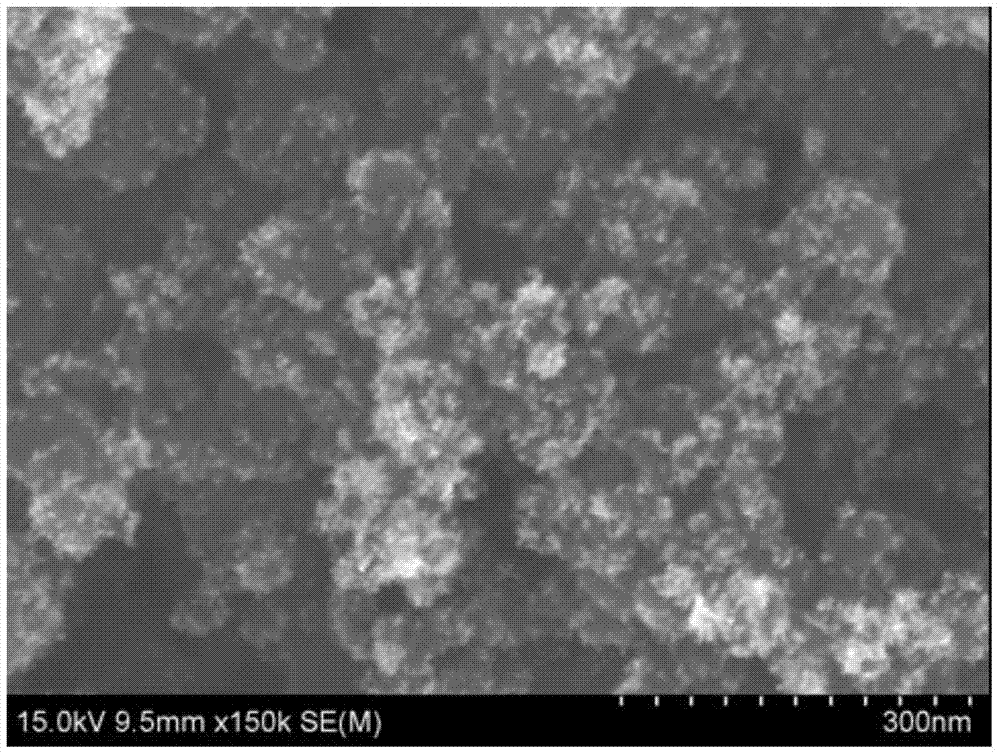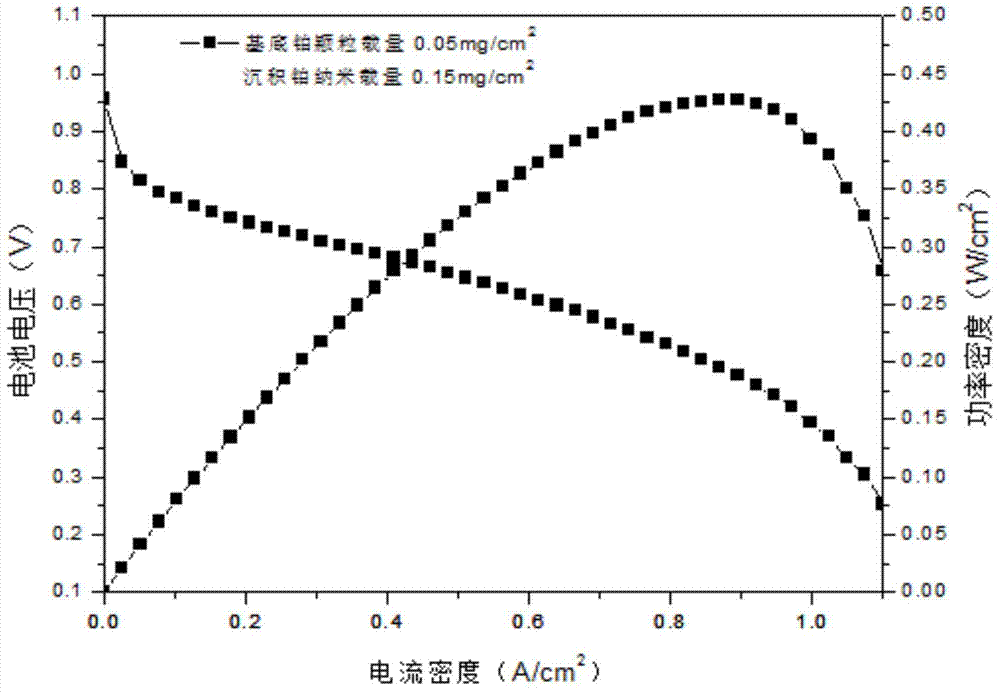Method for preparing platinum gradient-distribution catalyst layer structure of proton exchange membrane fuel cell
A technology of proton exchange membrane and gradient distribution, applied to battery electrodes, structural parts, circuits, etc., can solve the problems of ineffective utilization, inability to be fully utilized, and non-continuous gradient distribution of the catalyst layer, so as to achieve high utilization rate , large three-phase interface and short distance
- Summary
- Abstract
- Description
- Claims
- Application Information
AI Technical Summary
Problems solved by technology
Method used
Image
Examples
Embodiment 1
[0035](1) 5 mg of carbon-supported platinum catalyst (wherein the mass content of platinum is 20%) and 12.5 mg of Nafion solution (10% alcohol solution by mass fraction) are added in 1 ml of isopropanol, and the mixed solution is dispersed evenly by ultrasonic treatment , and then evenly spray it on the Nafion electrolyte membrane to form a uniform solution layer on the membrane (area 3.3×3.3cm 2 ), and then dried at 50° C. for 30 minutes to form a uniform matrix layer on the membrane, that is, a proton exchange membrane with a carbon-supported platinum matrix is obtained.
[0036] (2) The described proton exchange membrane with carbon-supported platinum matrix is immersed in the solution containing chloroplatinic acid and formic acid, wherein containing 4mg chloroplatinic acid (H2PtCl6H2O), 1ml formic acid (mass fraction 88%) and 40ml water. It was then left at room temperature for 48 hours to deposit 0.15 mg / cm 2 platinum. After the reaction, the proton exchange membr...
Embodiment 2
[0043] The difference from the above-mentioned Example 1 is that 2.5mg of carbon-supported platinum catalyst (wherein the mass content of platinum is 20%) and 6.25mg of Nafion solution (alcoholic solution with a mass fraction of 10%) is weighed, and all the other processes are the same as in the above-mentioned examples 1.
[0044] Figure 4 The polarization performance (I-V) curve of a fuel cell assembled using the catalytic layer prepared in this example as a cathode electrode. From Figure 4 It can be seen that the highest power density of the battery is 0.41W / cm 2 , at 0.3V, the current density reaches 0.97A / cm 2 .
PUM
| Property | Measurement | Unit |
|---|---|---|
| thickness | aaaaa | aaaaa |
| quality score | aaaaa | aaaaa |
Abstract
Description
Claims
Application Information
 Login to View More
Login to View More - R&D
- Intellectual Property
- Life Sciences
- Materials
- Tech Scout
- Unparalleled Data Quality
- Higher Quality Content
- 60% Fewer Hallucinations
Browse by: Latest US Patents, China's latest patents, Technical Efficacy Thesaurus, Application Domain, Technology Topic, Popular Technical Reports.
© 2025 PatSnap. All rights reserved.Legal|Privacy policy|Modern Slavery Act Transparency Statement|Sitemap|About US| Contact US: help@patsnap.com



